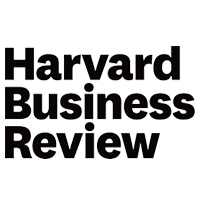Media Watch Archives
Researchers find collaborative flood modeling process effective
Smart Water Magazine -
“The impacts of flooding continue to escalate in the U.S. and around the world, and the main culprit is urban growth in harm’s way, with communities underprepared to deal with extreme events that are getting more intense in a warming climate,” said lead author Brett Sanders, UCI professor of civil & environmental engineering. “Our approach rests on making modern flood simulation technologies accessible and useful to everyone within at-risk communities.” Read More
How to Safeguard Against Cyberattacks on Utilities
Harvard Business Review -
“I can’t overemphasize the calamity that these events cause at the neighborhood level. Hundreds of health care facilities don’t have back-up generators,” said Jack Brouwer, an engineering professor and director of the National Fuel Cell Research Center at the University of California, Irvine. Referencing the deaths caused by previous wildfires in California, he said, “If you’re out of power for an hour, that’s fine, but for a couple of days — those lives count as much as those that would be lost in a fire.”
AghaKouchak, Artemyev, Fischer, Macdonald, and van Sebille Receive 2019 James B. Macelwane Medals
Eos – Earth and Space Science News -
“[UCI Professor] Amir AghaKouchak, has achieved an extraordinary international standing through fundamental contributions at an early stage of his career and has been very proactive in service and outreach and in promoting diversity and inclusive excellence. In just a few years, he has earned the respect and admiration of his peers, and he will continue his leadership role in the field in the future.”
—Isabella Velicogna, University of California, Irvine
Robots: Now coming to a workplace near you
CBS News -
"The easiest, most repetitive and routine tasks are the most likely to be automated," said Pramod Khargoneker, a future of work expert who is vice chancellor for research at the University of California at Irvine. "Robots have a harder time doing physical work in an environment that is unruly or unpredictable."
RCAM Technologies and Accucode Target 3D Printing for Offshore Wind Turbines
3D Printing Industry -
A low-cost wind turbine tower 3D printing method for land has been developed and tested by RCAM in collaboration with the University of California, Irvine, with funding from the California Energy Commission Grant EPC-17-023. Concrete 3D printing for offshore wind turbines is the next step.
Scientists from UC Campuses Study Floods, Flood Socioeconomics
Spectrum News1 -
UC Irvine Professor Brett Sanders says .... the data will help urban planning and public policy researchers to see how millions of people living in those high-flood risk areas could be affected. UC Irvine Professor Richard Matthew says that list could include, “their employment, their housing, their health, their transportation, their credit scores.” Matthew says history has shown poor communities fare far worse than wealthy communities. “We could take steps that reduce the vulnerability of the poorest people in our country,” Matthew said.
Drugs in Our Water Can Leave Even More Toxic By-Products
Eos – Earth and Space Science News -
“Ibuprofen is one of the most consumed pharmaceuticals around the world. It, and probably its transformation products, is found in considerable amounts in wastewater effluents,” said Adeyemi Adeleye, a civil and environmental engineer [assistant professor] at University of California, Irvine who was not involved with this research. “This study emphasizes the need to consider the by-products formed in the environment when assessing the risks of pharmaceuticals and other chemicals,” he said.
The Death And Life Of Iran's Lake Urmia
NPR – The Picture Show -
"The floods certainly helped and increased the water levels," says Amir AghaKouchak, a professor of civil and environmental engineering at the University of California, Irvine who has studied the lake. "However, one or a series of floods won't have a long-term impact. The main issue in the basin is that the water demand is much higher than the renewable water in the basin. ... If the water demand in the basin is not managed, after a while the lake will continue to dry out."
Opinion: Valley Voice: Let’s use local resources to tackle California's electric utility woes
The Desert Sun -
One approach that I believe needs attention — locally, if not nationally — was explained in a recent NPR interview (“Take Two,” with A Martinez, KPCC radio, Oct. 24, 2019) with Professor Jack Brouwer, director of the National Fuel Cell Research Center at UC-Irvine. Brouwer made an excellent case for utilizing fuel cell technology in conjunction with battery storage that is used along with solar and wind technology to comprise a microgrid.
Sonoma Fire, Microgrids, EV Chargers
KPCC -
Microgrids. Southern California Edison has shut off power to about 1,500 homes in the Southland today. It's a preemptive measure in case heavy winds knock over electricity transmission lines that could spark a wildfire. The move follows a controversial power shutoff in the Bay Area, and it's raising an important question: Isn't there a better way to produce and transmit electricity? Guest: Jack Brouwer, [associate professor, mechanical & aerospace engineering], University of California, Irvine. (Starts: 13:10)









